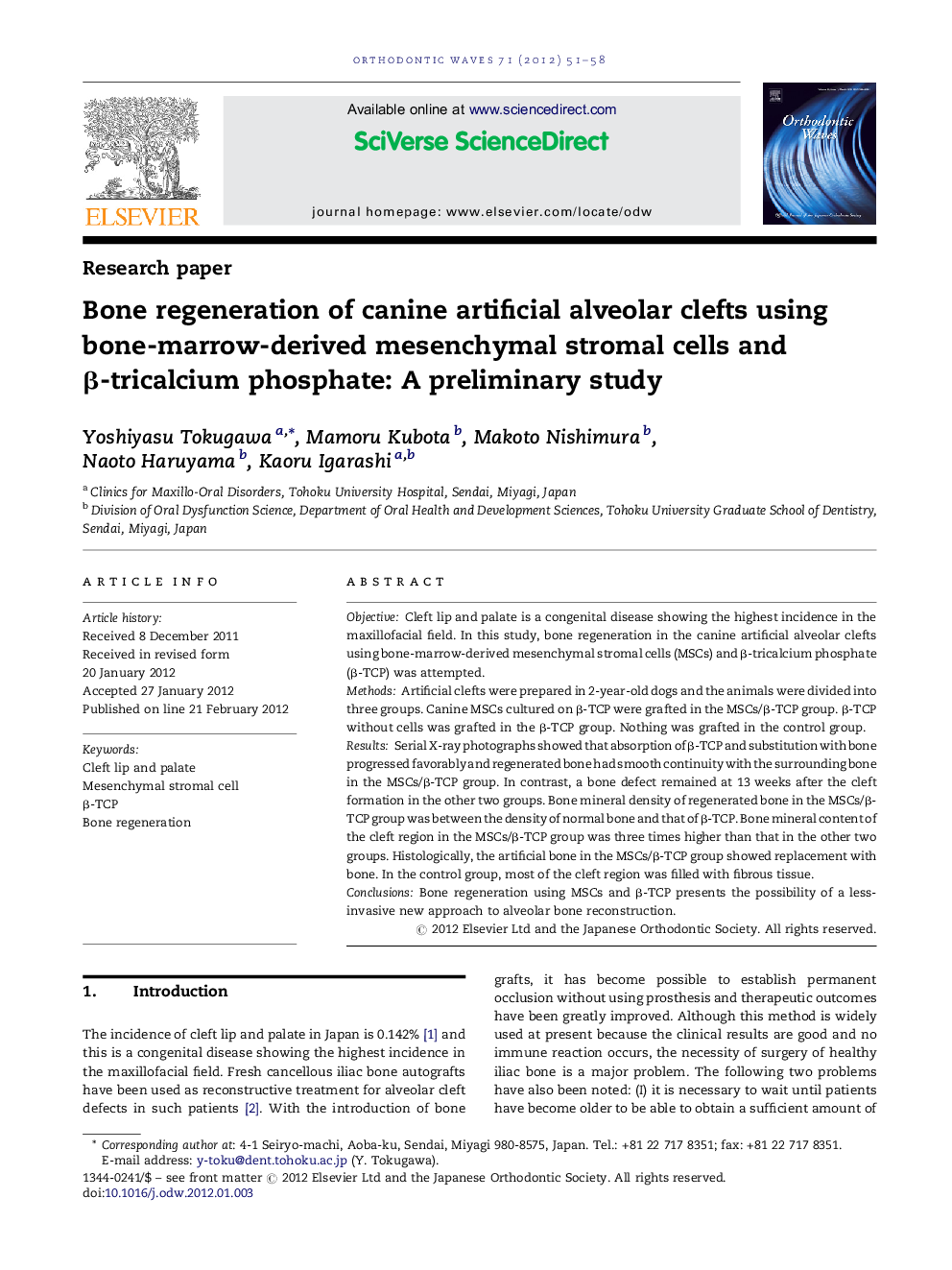| Article ID | Journal | Published Year | Pages | File Type |
|---|---|---|---|---|
| 3170414 | Orthodontic Waves | 2012 | 8 Pages |
ObjectiveCleft lip and palate is a congenital disease showing the highest incidence in the maxillofacial field. In this study, bone regeneration in the canine artificial alveolar clefts using bone-marrow-derived mesenchymal stromal cells (MSCs) and β-tricalcium phosphate (β-TCP) was attempted.MethodsArtificial clefts were prepared in 2-year-old dogs and the animals were divided into three groups. Canine MSCs cultured on β-TCP were grafted in the MSCs/β-TCP group. β-TCP without cells was grafted in the β-TCP group. Nothing was grafted in the control group.ResultsSerial X-ray photographs showed that absorption of β-TCP and substitution with bone progressed favorably and regenerated bone had smooth continuity with the surrounding bone in the MSCs/β-TCP group. In contrast, a bone defect remained at 13 weeks after the cleft formation in the other two groups. Bone mineral density of regenerated bone in the MSCs/β-TCP group was between the density of normal bone and that of β-TCP. Bone mineral content of the cleft region in the MSCs/β-TCP group was three times higher than that in the other two groups. Histologically, the artificial bone in the MSCs/β-TCP group showed replacement with bone. In the control group, most of the cleft region was filled with fibrous tissue.ConclusionsBone regeneration using MSCs and β-TCP presents the possibility of a less-invasive new approach to alveolar bone reconstruction.
